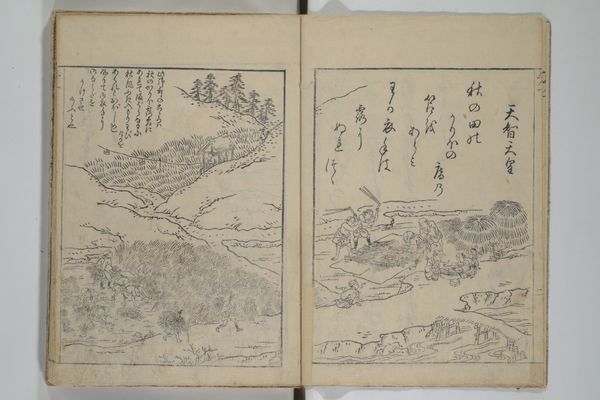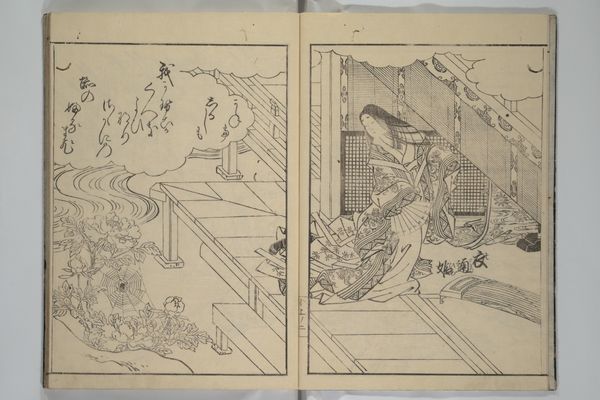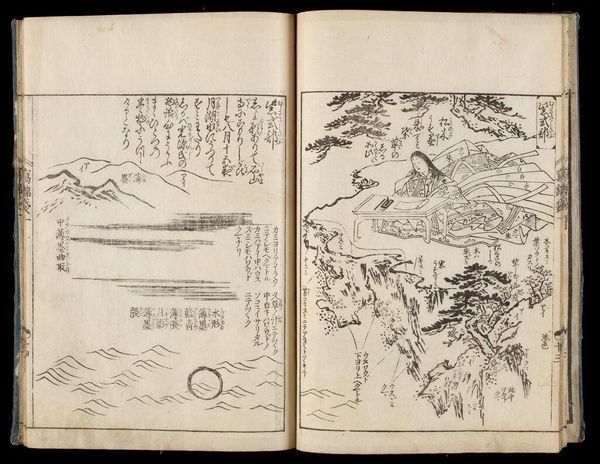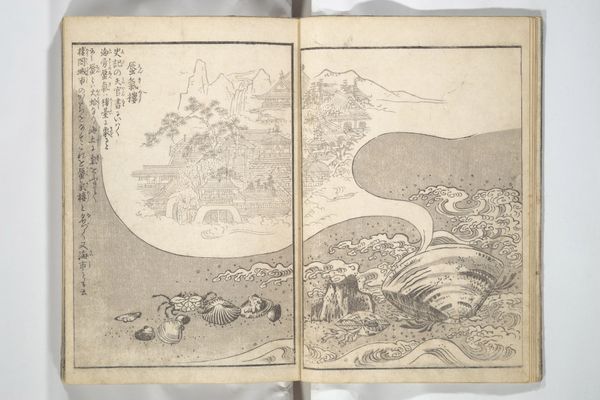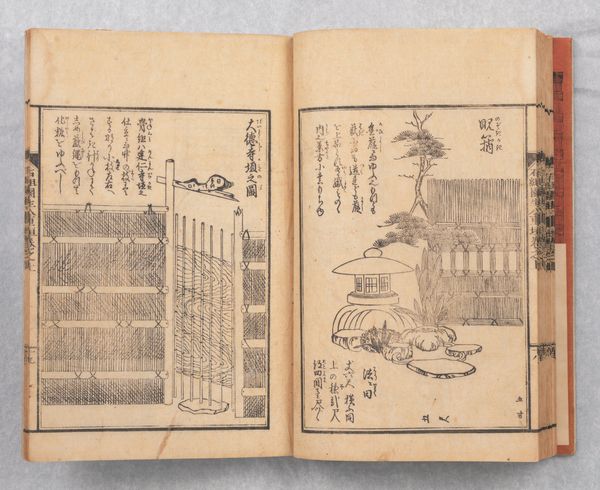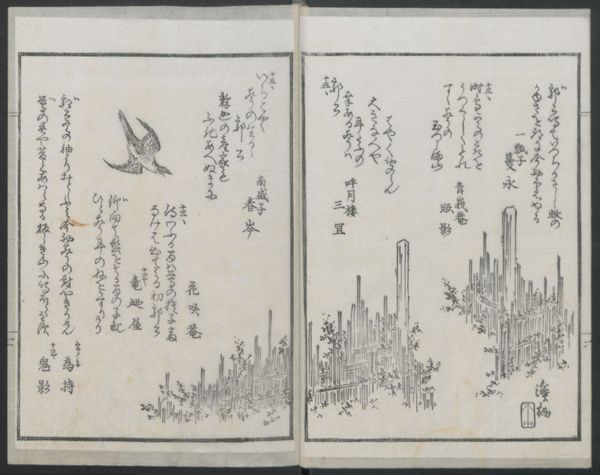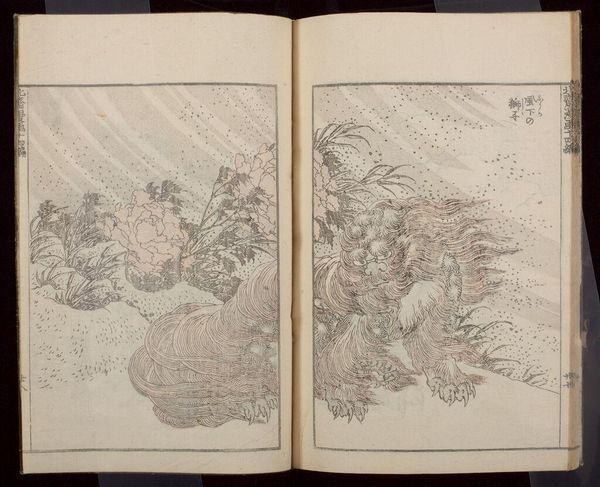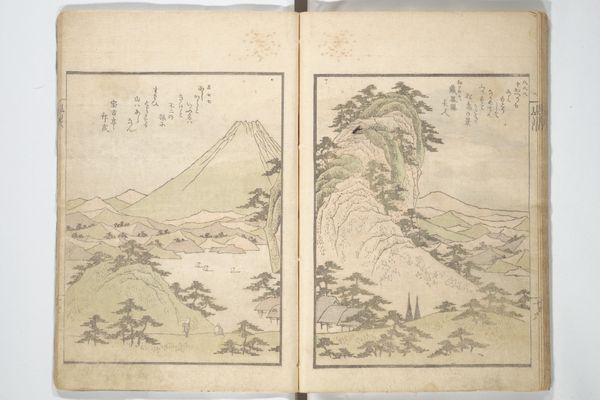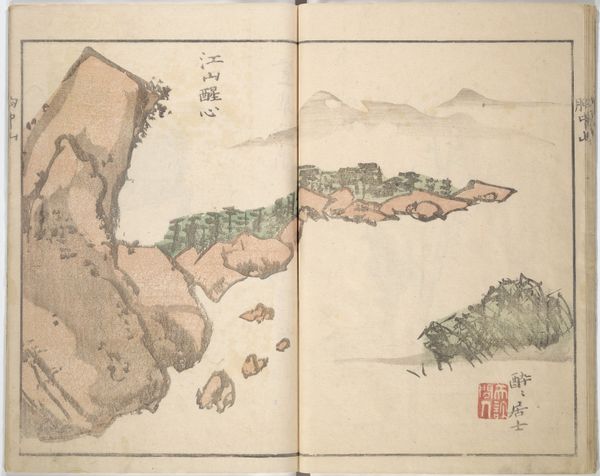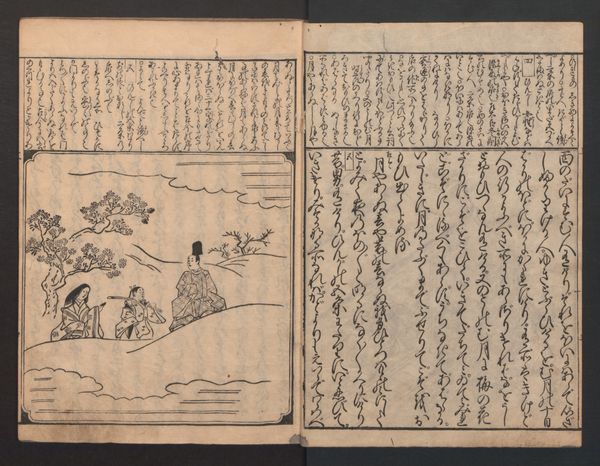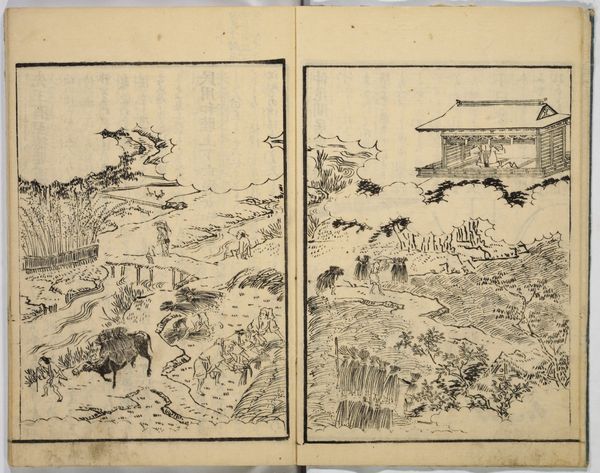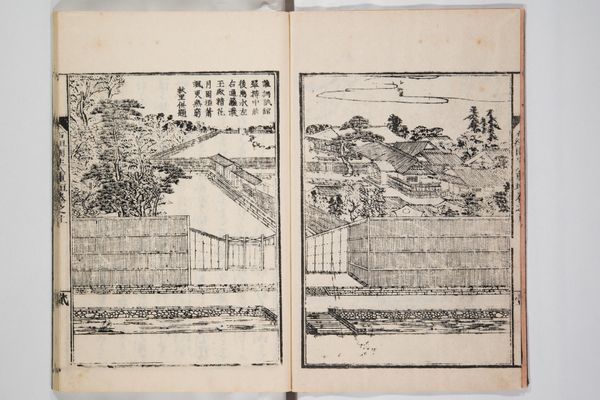
drawing, print, textile, paper, ink
#
drawing
# print
#
pattern
#
asian-art
#
textile
#
ukiyo-e
#
paper
#
ink
#
geometric
Dimensions: 10 3/4 × 7 3/8 in. (27.3 × 18.7 cm)
Copyright: Public Domain
Editor: This is Enoki Hironobu's "Book of Kosode Patterns" from 1751, currently held at the Metropolitan Museum of Art. It’s rendered with ink on paper, a collection of drawings and prints showcasing textile designs. I’m immediately drawn to the graphic quality and the way the floral and water motifs are repeated. What can you tell me about this piece? Curator: Look closely at the process: ink, paper, print. These are not precious materials in the Western sense, yet the labor involved in meticulously creating and reproducing these patterns elevates them. The “Book of Kosode Patterns” isn’t just about aesthetics; it’s about production. Consider how the mass production of such pattern books influenced the availability and consumption of fashion. How did this democratize style or perhaps create new hierarchies of taste? Editor: So you’re saying it's less about the beauty of the patterns and more about their accessibility and impact on the textile industry at the time? Curator: Exactly. The materiality allows for mass production, influencing social behavior around clothing and identity. These pattern books were essentially early forms of marketing. Notice how each design suggests not just what to wear, but also implies a certain social status attainable through purchase. This raises questions about class, aspiration, and the growing consumer culture of 18th century Japan. What implications does this have for contemporary designers or artists, who can now so easily disseminate imagery, given the means of social media? Editor: That’s a great point. It changes my perspective. I initially viewed it as a collection of beautiful designs, but now I see it as a tool in a much larger economic and social machine. Curator: Precisely. It makes you wonder about the intended audience, doesn't it? What were they actually purchasing - a design or an identity? Editor: It really highlights the power of design and production in shaping society, something I hadn’t fully considered before. Thank you for pointing that out.
Comments
No comments
Be the first to comment and join the conversation on the ultimate creative platform.
